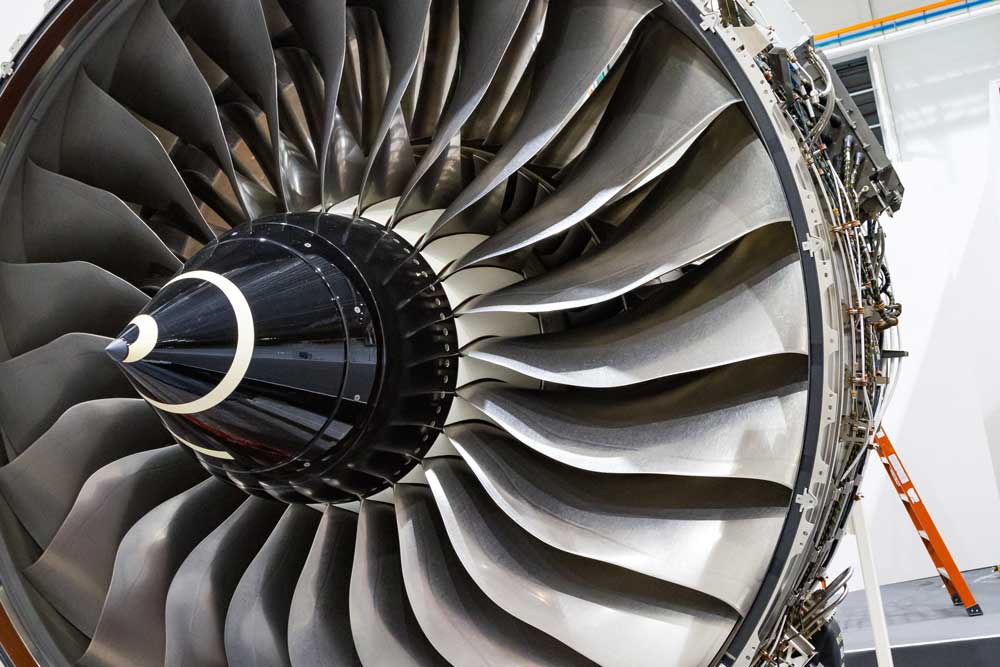Embracing Used Serviceable Material for a Sustainable Aviation Future

Why USM and why now?
In an era where environmental sustainability has become as crucial as operational efficiency, one might argue that the aviation industry stands at a crossroads. Even though the sector has been around for years, the urgent push towards eco-friendly practices has ramped up the awareness and acceptance of Used Serviceable Material (USM) in aviation.
With a market size valued at $7.1 billion in 2023 and projected growth to $10.3 billion by 2032, USM is no longer just an esoteric acronym used by a small segment of people; it's a transformative approach that addresses both the economic and environmental imperatives of the times.
Why now?
Because the industry needs to reconcile the increasing demand for air travel with the pressing need to reduce waste, making the utilisation of USM a practice whose time has come.
What are the projected benefits of USM?
The adoption of USM into MRO heralds a plethora of benefits. Foremost, it promises considerable cost efficiency and resource optimisation—vital for an industry looking to streamline budgets and invest in future advancements. Environmentally, it's a boon, prolonging the life of aircraft parts, thus curtailing the need for new production and its associated carbon footprint. Furthermore, the rigorous inspection and recertification processes ensure that USM components satisfy the highest safety and quality standards, providing airlines with parts that are both reliable and readily available, leading to faster turnaround times and reduced aircraft downtime.
Vendor Managed Inventory: Is it right for you?
What about traceability?
It's well understood that safety is the keystone of the aviation industry. And reliability is the support structure holding up aviation MRO. Traceability is essential to maintaining both safety and reliability.
Therefore, when it comes to USM, without meticulous traceability, aftermarket parts lose their value, posing a challenge for the industry to enforce efficient digital documentation practices.
Regardless of the obstacles, the opportunities that aftermarket parts pose are significant enough that there will be a growing financial incentive to rapidly overcome them.
How have perceptions changed?
The tide is turning in favor of USM. Once viewed with skepticism due to concerns over quality and reliability, today's USM parts, backed by rigorous certification, are dispelling doubts. Airlines and Maintenance, Repair, and Overhaul (MRO) providers are increasingly recognising the economic and environmental value of incorporating USM into their material management programmes.
Challenges and Opportunities
The USM market, while ripe with opportunity, does not come without its challenges. As mentioned before, the need to increasingly digitise the MRO industry should remain an ongoing priority.
However, what is probably the most paramount concern is that newer aircraft have longer lifecycles - meaning that there are fewer retirements, and therefore less harvestable material.
With all that said, however, the opportunities are substantial. The hard push towards meeting sustainability goals opens up avenues for USM to be a serious player within MRO across the globe. With the right investments in technology and a collaborative approach across OEMs and MROs, the full potential of USM could be unleashed, playing a significant role in the aviation industry's journey to 'Net Zero' by 2050.
Regulatory Evolution and Global Standards
As the aviation industry moves toward more sustainable practices, regulatory frameworks around USM are evolving.
Authorities such as EASA and the FAA have expanded their guidelines to accommodate the increasing use of USM in commercial fleets. This regulatory shift underscores a global recognition of the need to reuse materials efficiently. It also highlights the importance of standardizing practices across regions to ensure consistency in safety, quality, and traceability. Global aviation organizations are now focusing on refining certification processes to ensure compliance across different markets.
USM in Aircraft Modernization and Retrofits
USM isn't limited to routine maintenance—it’s also playing a growing role in aircraft modernization and retrofits.
With the rising demand for more fuel-efficient and environmentally friendly aircraft, airlines are looking to upgrade their existing fleets without the massive costs of new purchases.
USM parts are increasingly used in upgrading older aircraft systems, helping carriers meet modern performance standards while keeping costs manageable. This practice also ensures that older aircraft can continue to operate efficiently, prolonging their service life.
Conclusion
The adoption of Used Serviceable Material (USM) is not just a trend, but a pivotal strategy for achieving sustainability and operational efficiency in aviation.
With regulatory frameworks evolving, technological advancements making traceability more reliable, and the potential for significant cost savings, USM offers a compelling solution to both environmental and economic challenges. As the industry progresses toward a circular economy and works to meet global sustainability goals, USM is positioned to play an increasingly important role in the future of aviation maintenance.